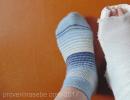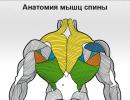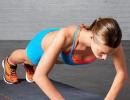Types of ski bindings. Which ski bindings to choose Ski boot bindings nnn and sns differences
Skiing is a popular sport that has captured the hearts of many people. But before you start such a ride, you need to prepare and choose the right equipment, which includes mounts. When buying binding systems, many are faced with the problem of choice, because they do not know what is the difference between NNN and SNS ski bindings, which ones to buy. It is impossible to say which one is better, since both types have characteristics suitable for certain riding styles.
When choosing ski structures, you need to consider: the type of track, the style of skiing, the experience of the athlete. For example, downhill skiing requires skills that are unacceptable for cross-country skiing.
Features and Benefits
NNN ski mounts feature a one-point interface, which simplifies installation and dismantling of the structure. And also on the sole are two guides that give lateral stability, preventing the boot from moving to the side. Fasteners, like boots, are: skating, classic.
NNN structures are installed on the ski platform. To properly distribute the center of gravity, you can place structures in any position. This is convenient for adjusting before riding on snow of varying density.
SNS ski bindings have one flexor guide, which is located in the middle of the sole. Pairing can be single-point, two-point. On the Pilot models, the boot is secured in two places. With this method of fastening, the separation of the sole from the platform is minimal, which allows you to better feel and control the skis.
Both systems are: mechanical, automatic. The difference in designs is that the mechanism is fastened manually, and on the machine it is enough to get into the mechanism with a groove, which even a child can handle.
Professional athletes use mechanical fasteners, since such designs do not unfasten even with intense driving. To fasten the machine, it is necessary to carefully clean the sinuses of the structure. Manuals are more expensive than automatics.
Differences between NNN and SNS mounts
Based on the structure and characteristics of the bindings, experts and professional athletes distinguish the following differences:
- Lateral stability - The presence of flexor guides provides sufficient stability for both systems, however, the Pilot models are designed to best secure the boot. To control the riding process, it is better to buy SNS bindings, but you should consult with a specialist before purchasing.
- Push - the strength of the push depends on the height of the leg during the move. NNN systems are designed to give the foot a free lift from the platform, which increases the power of the push.
- Stability - SNS bindings secure the boot to the ski more strongly, eliminating movement and slippage, giving the skier more stability.
How to choose
Before purchasing sports equipment, it is better to consult with specialists. When buying from professional sports shops, for example, in Decathlon, you can get the necessary information from the seller, who will help in purchasing: winter skis, ski rollers. The consultant will give instructions for the operation and repair of the fasteners.
What should be based on when choosing ski equipment:
- skiing skills - for beginners and amateurs it is better to choose stable models;
- riding style - whether it will be just pleasure riding or fast cross-country riding;
- the track is, perhaps, a distance without serious obstacles or skiing on mountain slopes;
- the possibility of self-assembly of structures.
In order for sports equipment to last as long as possible, it is recommended to follow some recommendations for caring for structures:
- Together with the fasteners, you need to purchase covers for storing equipment that will protect the product from the effects of external negative factors and possible damage.
- Before you get on your skis, you need to check the correct installation of the mounting systems.
- In order for the clutch of the mechanisms to be strong and correct, the grooves must be cleared of ice and snow. If the structure becomes clogged, then during a fast ride, the clasp may come unfastened, which will lead to the fall of the skier.
- After skiing, the equipment is cleaned from the snow, dried naturally, and put into covers.
Before you start skiing, you need to take care of the equipment, because even professional sportsman is not immune to injury if he rides with a bad binding. It is better to spend more money and get a branded product that will be safer.
To get real pleasure from skiing, you should pay attention not only to the choice of skis, but also to the quality of the bindings. Bindings are a kind of drive, an important link between the legs, shod in boots, and the actual skis. If not everything, then a lot depends on the quality of this “intermediary”. What is the best ski carrier?
Selection of ski bindings
The right mount tightly covers the shoes, but at the same time it is able to quickly come unfastened in a critical situation. For example, if you suddenly fall during a sharp turn.
Another important point! Under heavy loads, the binding should respond adequately - continue to hold the foot in place, and not immediately unfasten.
Choosing the right mount starts with... selection. Having shoes suitable in size and all other characteristics in your sports equipment, you can start choosing bindings for specific shoes and available ones.
General information about skis and bindings
 Skiing is an ancient invention. They first appeared about 4.5 thousand years ago in Scandinavia. And to this day, many improvements have been made.
Skiing is an ancient invention. They first appeared about 4.5 thousand years ago in Scandinavia. And to this day, many improvements have been made. For fasteners, this transformation is the most impressive. The banal tying of the leg with a belt passed through four holes sawn into the ski has been replaced by modern fastening systems made of plastic and metal.
Due to the wide range of ski equipment on the market and the literal translation of most foreign names into Russian, choosing a fastener for a beginner is not an easy task. The concept of "cross-country skiing" is especially broad. They can be "professional", "racing", "recreational", "universal" and so on.
It is best to choose inventory, based on speed.
- Sports equipment will be required for those who ride at a speed of 15 to 30 km / h on a good track.
- Amateur equipment is ideal for those reaching speeds of 9-15 km / h.
- Movement on the ski track no faster than 4-8 km / h will require tourist equipment.
Types of ski mounts
Mounting is carried out directly on skis or on special platforms. The latter can be installed by the manufacturer and have pre-drilled holes. In this case, the fasteners themselves will have to be bought by a certain company. Any fixing systems can be placed on platforms without holes. Holes in this case are drilled independently.
 Mount consists made of two separate parts and a plate under the toe, which reduces the friction of the boot. The front part is responsible for the side release, the back provides the upward release.
Mount consists made of two separate parts and a plate under the toe, which reduces the friction of the boot. The front part is responsible for the side release, the back provides the upward release.
The size of the front and rear coverage is the same for all models. So you can use shoes any manufacturer.
Mount adjustment skiing carried out depending on the weight of the skier. It also takes into account the experience and manner of skating. When skiing aggressively, the skis should not come loose.
- To determine the unit of actuation of the fasteners, you need to divide the weight of a person by 10. And for beginners, subtract 1-2 units from the resulting indicator.
- The maximum adjustment limits for ski bindings are plus or minus 3-4 units from the figure obtained at the beginning (weight minus 10).
- Sometimes the force is indicated not in units, but in kilograms. In this case, 20-30 kilograms are subtracted from the weight.
- To install the correct fastening unit, you can use the special tables that come with the fastening system. It is better for inexperienced skiers to resort to the help of an instructor or a seller.
Mounts are:
- Fastened by hand. Disadvantage: relatively high price.
- Semi-automatic and automatic. Flaws :
- jamming when water enters and freezes;
- may not open without support on a hard surface (for example, when falling into deep snow).
 Fastening features for cross-country skis are determined by the tracks on which they are used. When driving on flat or slightly rugged terrain, simplicity and low weight of the mounts are required.
Fastening features for cross-country skis are determined by the tracks on which they are used. When driving on flat or slightly rugged terrain, simplicity and low weight of the mounts are required.
Manufacturers produce 3 main types ski bindings: Roteffella (NNN system and its new version NIS), Salomon (SNS system) and c (familiar to everyone in the USSR).
1 77 mm (NN 75)- consists of three spikes mounted on a metal plate with a springy shackle.
Until recently, this type of binding was most often used among recreational skiers. He is well known to all of us from early childhood.
 Advantages ski bindings NN 75:
Advantages ski bindings NN 75:
- low price;
- the best option for teaching a child (enough for a year of use).
Flaws:
- difficult to put on and take off;
- a lot of cheap and low-quality models;
- boots for this type of binding are gradually leaving the market;
- inconvenient division into right and left fasteners.
2 Ski bindings SNS (Salomon Nordic System) designed for professional use. Both automatic and manual fastenings of this system are produced.
 Advantages SNS ski bindings :
Advantages SNS ski bindings :
- high quality and reliability;
Flaws:
- special shoes are required - boots with a rod included in the groove of the fasteners;
- used exclusively on tracks treated with a snowcat;
- shortage of shoes for this type of fastening.
3 Ski bindings NNN (Rottefella) are produced in two types: fastened directly with screws and put on a special "sled" (NIS-mount).
 Advantages ski bindings NNN :
Advantages ski bindings NNN :
- a wide selection of boots by price, manufacturer;
- the ability to choose the type of fasteners: automatic or manual;
- optimal combination of price and quality;
- availability of children's and youth models.
Flaws: automatic fasteners may freeze if water gets inside.
Secrets of selection and settings
- Experienced skiers are more likely to choose hand-attached systems.
- For beginners and amateurs, automatic options are more suitable, the easiest to use. Considering that speeds and elevation changes will be small, and the tracks will be more even, accidental shooting or, conversely, not detaching skis (in case of freezing water) is not as dangerous as when downhill on a difficult track for professionals.
The dimensions of the bindings are selected according to the width of the skis (their "waist"). Usually they are specified by the ski manufacturer and directly depend on the ski stop, a special wire at the back of the binding. - Screws with load scales (for adjusting the actuation) must be installed in accordance with the tables attached to the fastening mechanism. If in any doubt, seek professional advice. Arbitrary unfastening of skis, as well as failure of the detachment mechanism, can lead to serious injuries- Fractures or sprains.
- For all beginner skiers, the soft binding marked "Classic" is suitable.
- The choice of ski bindings is an exciting process, and with sufficient theoretical preparation, it is also quite simple.
How did you choose the fasteners? What difficulties did you have or was the purchase easy? Please share the secrets of your choice in the field for
Skis today are produced for a wide variety of purposes - for beginners and experienced athletes, for running or mountains.
Accordingly, the models differ in the materials from which they are made, in length and width, and necessarily in the types of fasteners.
Since the choice of ski shoes depends on the selected bindings, and sometimes even special design solutions are required in the arrangement of the skis themselves, the issue with them should be addressed first.
Retro style mounts
Considered obsolete, but mounts known as NN-75. These are the devices that the parents of today's athletes used to call tough.
They consist of a plate with pins and a clamping bracket. Boots for such bindings must have appropriate holes in the sole.
Such mounts are very cheap, but are gradually being replaced by other designs.
It is claimed that they do not allow the use of skating (although non-professional Soviet skiers somehow managed to do this). But the fact is that this system leaves the heel unfixed.

Modern Fashion - SNS and NNN
The most common types of cross-country ski bindings today are called SNS And NNN. Each of them requires a special type of shoe, there is no compatibility between them (although it is possible within the same group of bindings).
Both of these systems are distinguished by the presence of peculiar guides instead of pins (in the first case - one, in the second - two), which securely fix the foot with the help of similar grooves in the sole of the boots.
Both types of fastening are distinguished by rigidity. It is determined by the indicators of the rubber bands against which the boot rests during the push. They can be distinguished by color or applied numerical marking. Mounts SNS For skating sometimes produced with special springs instead of rubber bands.
System NNN however, it differs closer to the foot (almost under the fingers) by the location of the fixing spring, which also facilitates the movement of the “skate”.
In both of these types there are varieties that fasten automatically and require manual work. Experienced athletes usually choose SNS with manual fastening (they are more reliable), and beginners - NNN with automation (they are cheaper). These types of bindings are suitable for any shoe size.


Technical novelty NIS
Another type of ski binding for cross-country skis appeared in 2005. His symbol – NIS. The difference here is not in the principle of fixing the boot, but in the approach to the idea of installing the ski bindings themselves.
They can be fastened without screws, very quickly, and also moved along the ski. There is only one problem - only skis are suitable for this, on which the appropriate platform has already been installed in the factory.
In this case, special shoes are not needed - boots with a standard sole will do.

If the athlete intends to take only the first steps on skis, it is better for him to purchase the first equipment in accordance with the recommendations of a professional consultant.
And there is no need to strive to immediately buy all the most expensive - such equipment is intended for professionals, and completely different models and designs are suitable for beginners.
Fastening videos
CCM in winter triathlon. Creator of the online training program for cross-country skiing ProSki. Shares his experience in articles and blogs in in social networks, on a personal example motivates to go in for sports. Ski poles in his hands have become an integral part of his life. Egor in In contact with And Instagram.
Winter is coming. During this period, half of the runners will ski to diversify their workouts. Sneakers will be replaced by ski boots, and in their hands they will ski poles. How to choose equipment to feel like a skier? Decide on the choice of bindings and boots together with Egor Myshkov, CCM in winter triathlon, creator of the ProSki online training program for cross-country skiing.
We will start by determining which boot fastening system we will use. There are two of them: SNS and NNN. This year, they added another one, similar to NNN - TURNAMIC. Let's consider each type in detail.
SNS PROFILE. The most popular system until 2010. The fastening design has a wide protruding strip along the entire length. There is a wide groove on the sole of the boot. The mechanism for fixing the boot and fastening is simple: automatic or mechanical. The photo below shows the mechanical version. On the automatic, we need to insert the boot bracket with force into the place where the elastic is located. The rubber insert provides elastic work and responsiveness of the boot when pushing. To unfasten from such an attachment, we will need to press a finger on the button, which is located in front of the elastic band.
SNS PILOT. Now elastic work is not required for elastic work, the boot contact and fastening system has been changed: one more jumper on the boot has been added. It clings to an additional bracket located closer to the center of the mount. This system works like a spring: after pushing with the foot, the ski quickly returns to the sole of the boot. Due to this, the speed and frequency of the work of the legs increases. Fixation of the boot is carried out only in the mechanical version.

NNN. The difference between NNN and SNS is that there are two thin guides on the mount. The design of the sole of the boot has two narrow grooves, the boot is fastened with one bracket. The contact surface of the sole of such a system is larger, the ski is felt and controlled better than with SNS.

Note: Prolink. This is the same NNN system, only released as an addition to Salomon boots. Boots with the NNN system will also fit these bindings.

TURNAMIC. The sole of the boot will be similar to the sole of the SNS, while the binding will remain the same as the NNN.

Conclusion
The SNS and SNS PILOT mount was created by SALOMON. It so happened that the boots of this company, regardless of the model, were created warm. For some, this is a minus, since on their feet they feel like felt boots. Ski control feels weak. The top models do not have this problem, as they are made of carbon: it is light and durable. The outsole is thicker than the NNN due to the protruding part of the binding. The choice should, first of all, be based on personal feelings. Each manufacturer's shoe lasts are different, so you need to compare and choose the option that suits you best.
SKI BOOT CONSTRUCTION
It is easier to start mastering cross-country skiing with skating. Classic move suggests the presence of holding ointments under the ski block. To choose them correctly for the weather, you need experience, otherwise the skis will slip back. Skating is ideal for beginners. The mechanics of movement is similar to skating or roller skating.
On boots for skating, there should be a rigid cuff that fixes the position of the ankle: it will become easier to control the ski. The sole should not be flexible, the rigidity of such boots is justified. When moving from foot to foot, it is necessary to maintain balance and control the movement of the ski. The cuff helps guide the ski and eliminate twists in the foot.
The price of boots will depend on the materials from which they are made. The carbon parts will add strength and lightness to the construction of the boot along with the price. Lightweight models are made for competitive athletes and have a high degree of rigidity. For beginners, it may just be uncomfortable to ride in such boots.
Below are the models ski boots, which I like more in terms of functionality.
Fischer Carbonlite Skate or RC7 Skate. Comfortable boot design. Optimum rigidity, at which it is comfortable to train, as well as compete in competitions. The difference between the models is that the RC7 does not have a carbon construction, which means it is heavier.
 Fischer Carbonlite Skate
Fischer Carbonlite Skate
Boots for advanced lovers. Cuff made of lightweight and durable 3D plastic. By design, they are similar to the top models, but more comfortable for regular workouts.

Spine Carera Carbon Pro and Concept Skate Pro. I want to mention this Russian company. Their price will be 2 times cheaper than the previous ones, and they are created on the basis of our weather conditions. These are warm boots. The quality is approaching the level of world brands. There are disadvantages only in terms of the life of individual parts of the boot. If you are just starting your skiing journey, then this is a suitable budget option.


In the next part, we will talk about choosing the length of skis and poles. Cross-country skiing develop all muscle groups, and walks in the frosty air harden your body and saturate it with oxygen.
Love skiing! Get on your skis!
To date, there are 2 popular types of mounts: SNS and NNN. The difference between SNS and NNN is the number of protrusions for fixing the boot. SNS has one central, and NNN has 2 small ones at the edges.
Available skating Valso and TISA mounts type NNN.
The first thing we do when installing bindings is to find the center of gravity of each ski. I did it with a corner.

Skis must balance. We draw a center of gravity line on each ski.

We press the edges of the skis to a flat surface.  And we draw an average line between the centers of gravity on each ski.
And we draw an average line between the centers of gravity on each ski.


I do this so that the mounts are symmetrical. This line should be at the junction of the ski boot and binding.
We attach the mount focusing on the line.

We put dots in the holes for the screws. We measure their symmetry relative to the edges.

Drill holes with a small drill. The drill diameter must be smaller than the bolt diameter.

Pour glue into the holes made.

We attach the mount.

We tighten the bolts.

Here's what happened.

According to the size of the boot, you need to install heels. The thrust bearing in this mount has 2 fixation points, since it is not a continuation of the mount, but goes as a separate element. In other mounts, the thrust bearing extends from the mount to the desired length and is screwed onto one self-tapping screw.
Measure and drill 2 holes. We insert the thrust pin into one, and tighten the self-tapping screw into the second. Thus it is fixed.







